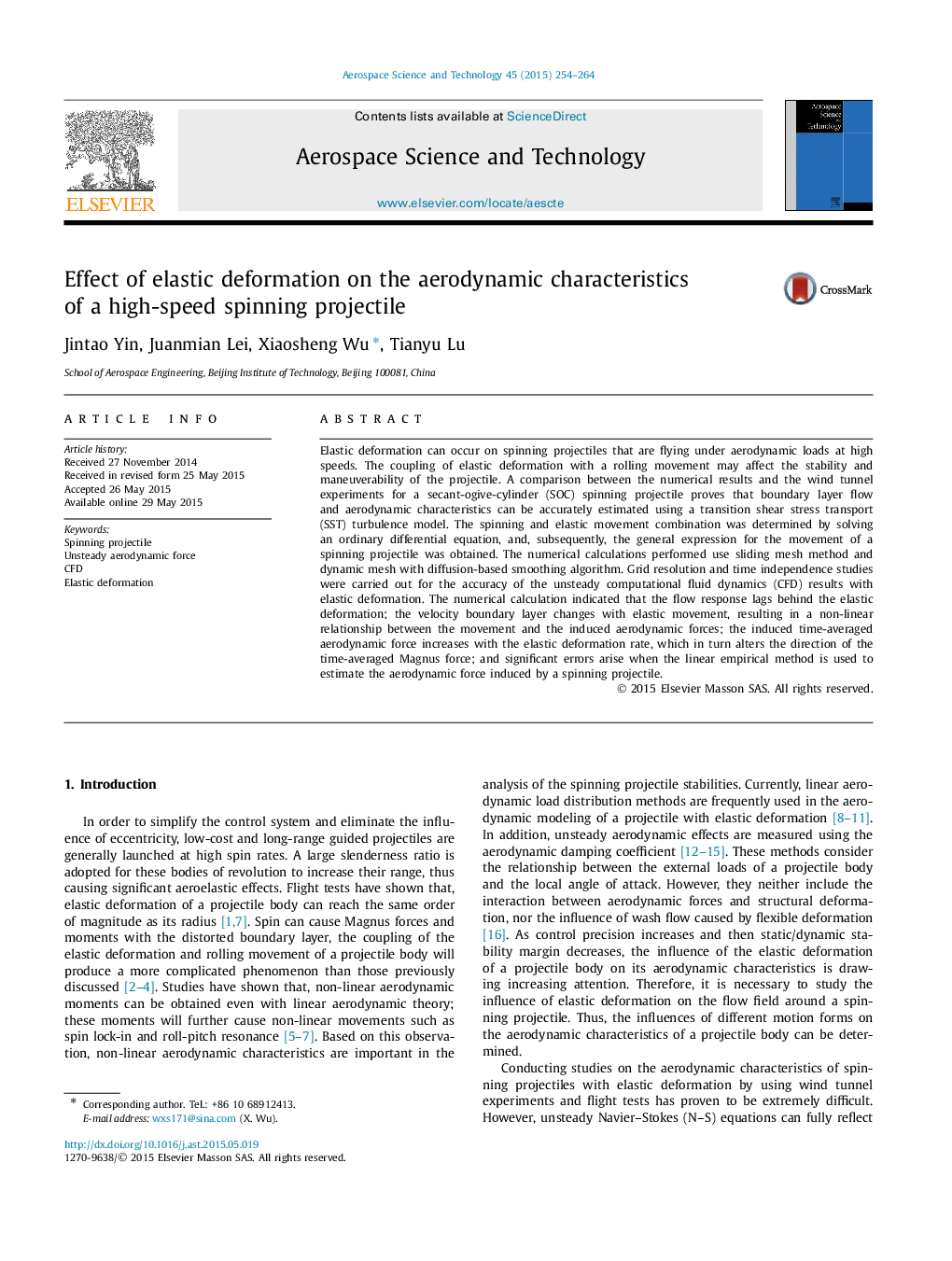| Article ID | Journal | Published Year | Pages | File Type |
|---|---|---|---|---|
| 1717813 | Aerospace Science and Technology | 2015 | 11 Pages |
Elastic deformation can occur on spinning projectiles that are flying under aerodynamic loads at high speeds. The coupling of elastic deformation with a rolling movement may affect the stability and maneuverability of the projectile. A comparison between the numerical results and the wind tunnel experiments for a secant-ogive-cylinder (SOC) spinning projectile proves that boundary layer flow and aerodynamic characteristics can be accurately estimated using a transition shear stress transport (SST) turbulence model. The spinning and elastic movement combination was determined by solving an ordinary differential equation, and, subsequently, the general expression for the movement of a spinning projectile was obtained. The numerical calculations performed use sliding mesh method and dynamic mesh with diffusion-based smoothing algorithm. Grid resolution and time independence studies were carried out for the accuracy of the unsteady computational fluid dynamics (CFD) results with elastic deformation. The numerical calculation indicated that the flow response lags behind the elastic deformation; the velocity boundary layer changes with elastic movement, resulting in a non-linear relationship between the movement and the induced aerodynamic forces; the induced time-averaged aerodynamic force increases with the elastic deformation rate, which in turn alters the direction of the time-averaged Magnus force; and significant errors arise when the linear empirical method is used to estimate the aerodynamic force induced by a spinning projectile.
